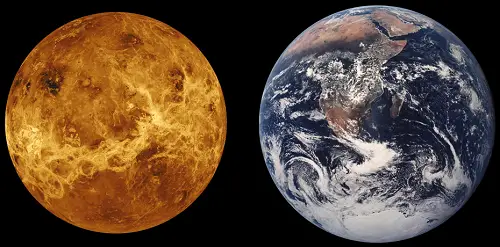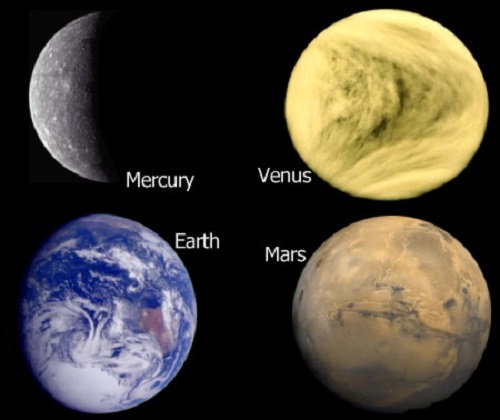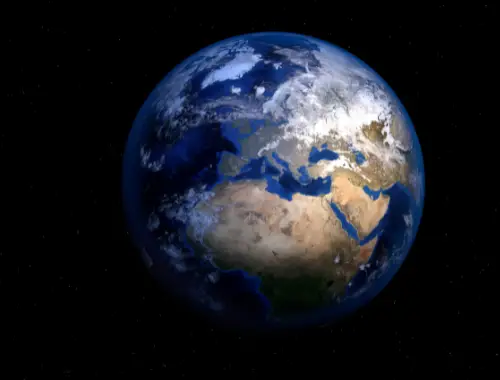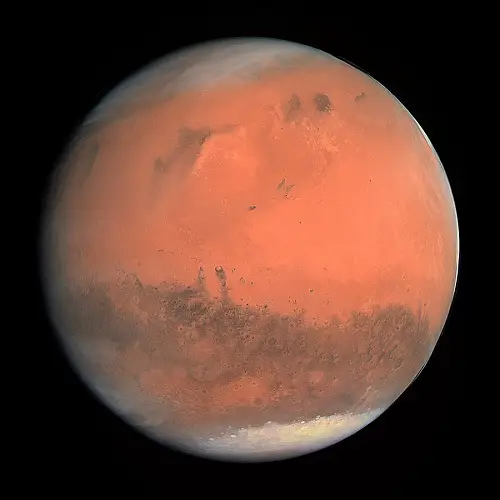Venus and Earth are some of the planets within the solar system. Despite being located at different distances from the sun and rotating on different orbits, the two planets have some similarities.
-
What is Venus?
Venus is the second planet from the sun within the solar system named after the Roman goddess of love and beauty. This planet rotates in a different direction as compared to other planets within the solar system.

-
What is Earth?
Earth is the third planet from the sun and the fifth planet. It is the only object in the universe that is known to support life. According to scientists, the earth has been in existence for about 4 billion years.
Similarities Between Venus and Earth
- Similarities Between Venus and Earth in terms of “Size, Mass, and Volume”
One of the main similarity between earth and Venus is that their sizes, mass, and volume are almost the same although the earth is believed to be slightly larger in all aspects. However, some scientists have argued that all the three aspects of measurement are almost identical when one compares both earth and Venus. The mass of and volume of the earth are 5.972 × 10^24 kg and 1.08321×1012 km3 (2.59876×1011 cu mi) respectively while the mass of Venus is 4.867 × 10^24 kg (0.815 M⊕) which indicates as significant similarity with that of the earth.
- Similarities Between Venus and Earth in terms of “Weather and Climate”
Secondly, both earth and Venus are believed to have complex weather and climate conditions. Majority of the weather conditions experienced on earth, which includes rain, wind, cloud, and dust storms among others are all present on Venus. Besides, the natural disasters that continuously appear on earth like tornadoes, ice storms, and typhoons occasionally happen in Venus. It is important to note that Venus experience different weather patterns in various parts of the planet as demonstrated by altered weather patterns around the earth. The only difference between the two planets regarding weather is that Venus does not have water in its atmosphere while the earth has a significant amount of water in the atmosphere.
- Similarities Between Venus and Earth in terms of “Geological Patterns and Land Surface”
Thirdly, the majority of the geological patterns and land surface in Venus are very similar to those found on the earth. Different types of soils, which include loam soils, clay soils, and sandy soils present on earth, are also present on Venus. It is also necessary to recognize that on both planets, the ground is primarily formed after disintegration and weathering of huge locks due to extremely cold and hot temperatures. On the land surface, mountains, valleys, and slopes present on the surface of the earth are also present on the surface of Venus. Majority of the volcanic mountains in Venus are very active while only a few mountains are active on earth.
- Similarities Between Venus and Earth in terms of “Atmospheric Composition and Pollution”
There is a significant similarity between the atmospheric composition of Venus and that of the earth. Some of the gases and compounds present on earth have also be seen on Venus. For example, the two planets have nitrogen, carbon dioxide, and other gases like neon, nitrogen, hydrogen fluoride, and helium. The only difference in the composition of these gases is that the percentage of composition varies significantly. The largest gas composition in the atmosphere of the earth is Nitrogen at 78% while the largest gas composition in the atmosphere of Venus is carbon dioxide at 96%. Regarding pollution, the earth is highly polluted with human activities that render the atmosphere to have a different composition from its original one. On the other hand, the atmosphere of Venus is highly polluted due to high carbon dioxide in the air making temperatures to be hotter than the atmosphere of Mercury.
- Similarities Between Venus and Earth in terms of “Structure”
Both earth and Venus have a similar structure as depicted by various scientists. The atmosphere of the two objects is divided into various layers concerning the prevailing weather conditions. Besides, the structure of the two objects in the universe is said to similar in that they have a crust on the surface, which contains solid and weathered rocks, a mantle, which contains very hard rocks, and core which contains molten rocks ready for volcanic activity.
Summary
- Venus has often been called Earth’s sister planet because of their similarities.
- There are also many differences between Venus and Earth. Venus is about 108 million kilometers from the Sun and has an approximately entirely circular orbit, while all of the other planets have elliptical orbits.
Author: Jecinta Morgan
Jecinta is an experienced writer who has been writing for more than three years and she has a degree in Finance and Accounting.












Leave a Reply